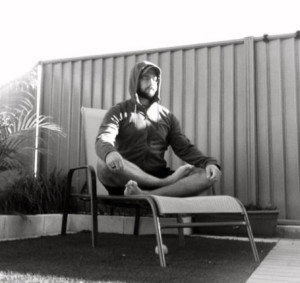By Jason Donaldson
PSE Director of Training
One of the most frequent questions we hear is, “Where do I start with breath work?”
People know how powerful the breath can be but they’re generally confused. What do I do if I can’t maintain nasal breathing? What if I can’t breathe well through my nose? Should I do a Cadence Protocol before training fo after? What about Apnea? Should I Superventilate between intervals? Should my belly stick out when I breathe in?
The questions are many. The problem is, the answer is very often, “it depends”. This leads to confusion. When we’re confused, we generally opt out and do nothing rather than try to wade through the confusion. What follows is a brief look into my personal breath work journey. It’s my hope that by sharing this, you will have a little better idea of how to apply breath work in your life.
 First, a quick look at my history with breathing.
First, a quick look at my history with breathing.
I was a lifelong mouth breather. I didn’t realise this until Brian recommended I read The Oxygen Advantage by Patrick McKeown. Much of what Patrick covered in this great book connected many dots for me.
Allergies – check.
Underdeveloped jaw – check.
Crowded teeth – check.
Bags under the eyes – check.
Snoring – check.
Repeated Sinus Infections – check
Poor breath hold ability – check.
All very attractive sounding qualities, right!?
These things resulted from my habit of mouth-breathing. Only I didn’t know it. Knowing would have saved a fortune on orthodontic treatment, surgeries and allergy medications. I may also have performed much better in many areas of life.
My journey, like many others, started with awareness.
I developed an awareness, through reading, of how I was to breathe. Then by tuning into what I was doing, I knew that I was breathing all wrong.
Fast forward to now, I have learned a lot more about the principles of better breathing and how they apply to my life. I continue to delve deeper into the breath and how I can use it in all areas of my life.
Nasal breathing was the next step for me. Nasal breathing in everyday life, while training and even while sleeping.
A couple of the surgeries I mentioned were to my sinuses with one including fixing up a deviated septum. I still have a bit of a deviated septum that can inhibit my ability to nasal breathe. But the more I do it, the better it gets.
To improve at nasal breathing, I nasal breathe. I tape my mouth at night to ensure I nasal breathe while sleeping. I often tape my mouth while training to reinforce the habit. I still catch myself mouth breathing from time to time but correct it as soon as I realise.
I also became aware that I hold a lot of tension in my upper back and neck. This is often exacerbated by breathing using my chest. There’s that awareness again. Now I know how it feels to use my diaphragm from the Art of Breath clinic and the Breathing Mechanics program. I also pay special attention to thoracic and hip mobility.
So far, we have – Awareness and Mechanics.
A formal daily breath practice was the next thing I implemented.
What formal breath practice or protocol, of the many hundreds, you utilise doesn’t matter. What matters is that you put something in place that you can do daily. Make it a habit. Morning or evening. Before or after training. Between the office and home.
It doesn’t have to be complex or long, 5-10 minutes is great. Do something. This will give you insight and awareness into how practices or protocols affect you.
For example, I find anything with an exhale breath hold is a bit stressful for me. Protocols with an exhale hold up-regulate me. But anything that has an inhale hold has the opposite effect.
A protocol I used a lot for down-regulation (before bed) was 10-20 cycles of a 5-second inhale and a 5-second exhale.
For up-regulation (in the morning or before training) I used either a step-up Superventilation protocol, 20-30 breaths + :20-1:00 exhale hold + 3×5/5/5/5. I repeated the entire sequence for 3-5 cycles increasing the exhale hold time and the 5/5/5/5 by 1-second each time). Or I used a Kapalbhati protocol of 10 breaths + :10 exhale hold repeated for 5-10 cycles.
After trying different protocols for a few months I did our PSE Personalised Breath Assessment. This gave me 6 protocols based on my tolerance to Carbon Dioxide and my answers to an Emotional Reactivity Questionnaire.
To be completely honest, I don’t utilise all 6 protocols all the time these days. But that is fine. They’re designed for different circumstances. The important thing is that I have used them enough that I know what they are, when to use them and what affect they have on me.
The next part of my journey has led me to Apnea Tables. (I use the STAmina app)
My CO2 Tolerance score is generally around 60-seconds. But I am terrible at holding my breath while doing work. This has a lot to do with the stress and anxiety I experience when breath holding. That’s why I am now exposing myself daily to that uncomfortable feeling I get when I hold my breath. And, I’m improving.
So we have;
Awareness
Mechanics
Consistency
To sum up, here are my 5 tips for getting started with breath work.
1) Be aware of how you are breathing and how that is affecting you and your performance.
2) Breathe through your nose as much as you can. The only time you should be be using your mouth is when operating at a very high intensity. And only then, on purpose.
3) Can you inhale and exhale fully without restriction, using your diaphragm? If not, identify where you’re feeling the restriction and address the issue. Is it mobility like a stiff thoracic spine? Is it structural like a deviated septum? Can you feel your diaphragm working?
4) Have a formal, daily breath practice – something you can fit into your everyday life. My formal practice, currently the Apnea Tables, is less than 20 minutes and I slot it in before training. But I still utilise all the other things I have learned about the breath throughout my day. Breathing doesn’t take time off.
5) Take notice of how your breath is affecting your body, your performance and your mental state. Make adjustments as necessary. Your body is an advanced piece of equipment, it will let you know. But you have to tune in.
To dive deeper into Breath work options we have available at PSE, there is a list of products and services below. I have compiled them in the recommended order of completion. That said you can choose to start with the product or service you feel suits your needs best right now.
PSE PRO PLUS – Breath Mechanics #1
PSE PRO PLUS – Nasal Breathing Development #1
PSE PRO PLUS – Energy System Control
PSE Personalised Breath Assessment
Art of Breath Clinic – you can complete this at any point. It is the most comprehensive of our breath-related offerings.


No Comments